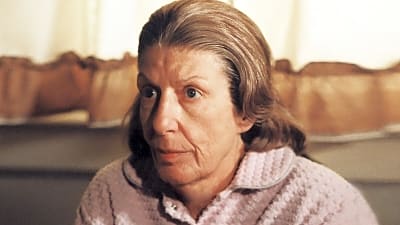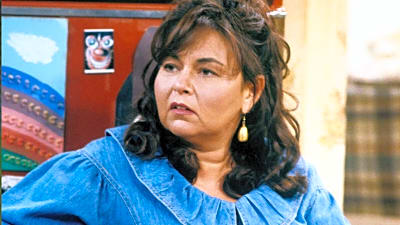
The enduring, influential goofball glory of Gilda Radner
There might not have been much of an edge to Gilda Radner’s comedy, but, dear god, was there ever a charge. During her five blindingly brilliant seasons at “Saturday Night Live,” she was 20,000 megawatts of pure comedic energy. Whether delivering dubious consumer-affairs reports as the brazen, bizarrely digressive Roseanne Roseannadanna or literally bouncing off the walls as the bored-to-madness adolescent Judy Miller, Radner filled millions of living rooms with riotous laughter, bringing joy to a country crawling out from under the double-whammy hangovers of Vietnam and Watergate and inspiring a multitude of funny young women to unleash their inner goofball.
Though Radner’s influence on two generations (and counting) of comedic performers is undeniable, she’s been gone for so long now — 29 years — it feels as though we’ve lost touch with the flesh-and-blood human being behind these iconic characters.
This makes Lisa D’Apolito’s new documentary, “Love, Gilda,” which opens in theaters on September 21, something of a blessed event. Here’s Radner in her own words via never-before-released journal entries (written and recorded), skipping about in vintage family home movies and trying like hell to find the light side of ovarian cancer in painfully intimate videos chronicling her arduous chemotherapy regimen.
For 88 minutes, she’s with us again, and within that too-brief run time — which also includes interviews with contemporaries (Chevy Chase, Martin Short, Paul Shaffer) and next-gen greats (Amy Poehler, Melissa McCarthy, Maya Rudolph) — we’re reminded how profoundly she altered the comedy landscape.
Gilda Radner was born in 1946 to Herman and Henrietta Radner; Herman was the successful operator of Detroit's Seville Hotel, which made for a financially comfortable childhood. Her upbringing was not without tragedy, however; when she was 14, Herman died of brain cancer. Radner also struggled with overeating, which so alarmed her mother that she placed her 10-year-old daughter on Dexedrine (thus kicking off a lifelong battle with eating disorders). Radner’s weight caused her to get bullied at school, which prompted her nanny, Elizabeth Gillies (affectionately known as “Dibby”), to encourage her to develop a sense of humor, reasoning that she could preempt the bullying if she made her tormentors laugh.
It worked.
Years later, Radner based her elderly character, Emily Litella, on Dibby. Radner put in three years at the University of Michigan before fleeing north with her artist boyfriend, Jeffrey Rubinoff, to Toronto, where, in 1972, she made her legit theater debut in a now-legendary production of "Godspell" featuring an abundance of up-and-coming comedic talent (Martin Short, Eugene Levy, Andrea Martin, Dave Thomas and Paul Shaffer).
She bewitched everyone in the show.
According to Short, “Everybody wanted to get to know her. When she left rehearsals, people wanted to know who she was meeting, where she was going.” At aftershow parties, Radner dazzled her castmates with her ceaselessly inventive improvisation skills. It quickly became clear she wasn’t just hanging with the best; she was outclassing them.
Stardom beckoned in New York City, and Radner answered its call by joining the “National Lampoon Radio Hour” in 1974. This brought Radner to the attention of producer Lorne Michaels, who poached her and two other cast members (John Belushi and Chevy Chase) for his live, late-night comedy experiment “NBC’s Saturday Night” (rechristened “Saturday Night Live” in 1977). Gilda Radner was a household name before the end of the first season.
While most of her “Saturday Night Live” colleagues were out to torch the status quo with incendiary political humor, Radner went to work building a diverse repertoire of wildly eccentric characters. She was a zanier, naughtier Lucille Ball (who, along with Charlie Chaplin, she counted as a key comedic influence). Her nearest comparison in terms of talent, versatility and immersion in 1975 was Lily Tomlin; but whereas Tomlin was polished and controlled, Radner attacked each skit with a go-for-broke, we’re-all-gonna-die zeal. Every time Radner entered a scene, you felt that charge, and you could sense that her costars felt it, too.
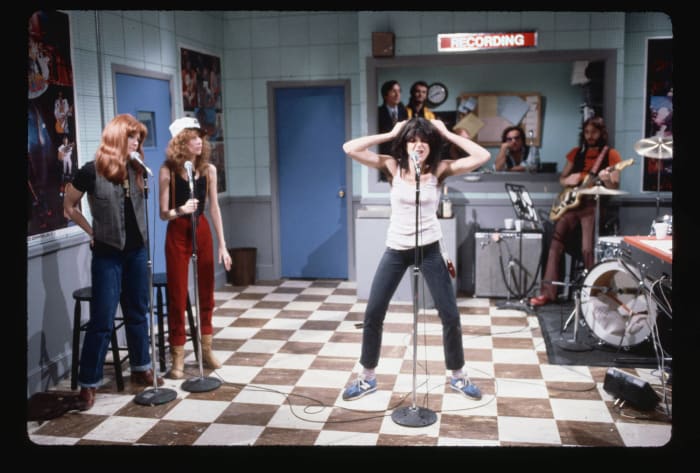
Belushi and Aykroyd possessed that scene-exploding talent as well, but there was a dark, sometimes cruel undercurrent to their comedy. They wanted to be dangerous. When Radner pushed the boundaries, it was always because the character and the situation called for it (like when, as Roseanne Roseannadanna, she became the first person to utter the word “bitch” on network television). Her comedy was inclusive, her characters, no matter how broadly drawn, identifiably human.
Behind the scenes, Radner stood out from her “SNL” colleagues for her lack of an out-of-control drug habit. Her addiction was work. She was ferociously committed to the show. According to “Saturday Night: A Backstage History of Saturday Night Live” by Doug Hill and Jeff Weingrad, she put in more hours at 30 Rock than any of her costars.
“If she went home to sleep, she kept her telephone next to her in bed, always ready to come back to work on a piece. She once showed up on 17 in her pajamas at 2:00 A.M., claiming she’d actually been dressed when the writer called but that she’d changed into more appropriate attire to come back to the office.”
The writers referred to Radner and Belushi as the “meat and potatoes” of “SNL” — in other words, if you wanted to get a sketch on the air, your best bet was writing for one or, better yet, both of them. Radner immediately hit it off with writer Alan Zweibel, with whom she concocted some of her greatest sketches. “There was a chemistry that we had,” said Zweibel, whose relationship with Radner inspired his 1994 book “Bunny, Bunny: Gilda Radner — A Sort of Love Story”, which he later adapted for the stage. “We made each other laugh. I didn't know anybody, and she was new to New York. We were like two kids that gravitated to each other. There was this vulnerability there that I responded to as well.”
Radner’s vulnerability was often coated over with several layers of silliness, but it was very much evident off camera. The sadness had been there since childhood, and it followed her wherever she went. In “Love, Gilda,” Short recalls being taken aback by Radner’s gloomy moods when they worked together on "Godspell" in 1972. He was still in his early 20s, and he couldn't understand how someone so outrageously talented and funny and loved could fall into such deep depressions. “I wasn’t sophisticated enough to understand that her emotional uncertainty was valid,” he lamented.
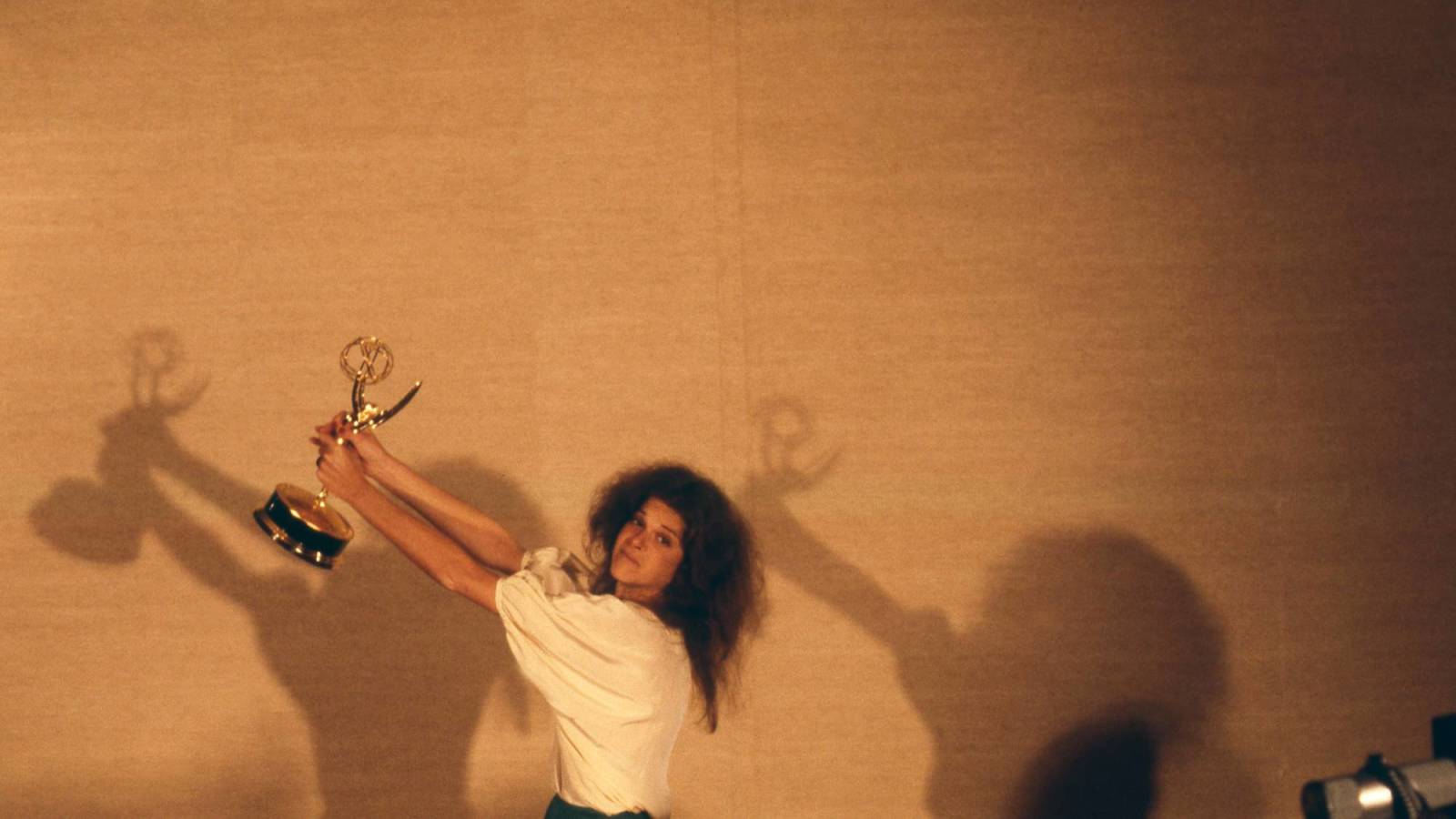
Radner fell in love as easily, and as often, as men fell in love with her. She dated many of her creative collaborators (in 1984, she remarked to a friend that she’d gone out with three of the Ghostbusters), leading to many bruised — if not broken — hearts, hers typically taking the worst of it. While Radner’s sketches tended to be too wacky to give you a sense of the emotional turmoil and deep romantic longing that ate away at her in real life, every now and then it would peek through — particularly when she paired with Steve Martin to make an endearingly oafish mockery of the classic Fred Astaire/Cyd Charisse pas de deux from Vincente Minnelli’s “The Band Wagon.” (This is the clip they played on "SNL" the night she died.)
It wasn’t until Radner brought all of her characters together for a one-woman show at Broadway’s Winter Garden Theatre in 1979 that she finally dropped her guard just a little and let us in on the melancholy of her life. The moment arrives at the end of the performance (filmed by Mike Nichols and released theatrically in 1980). As Radner transitions out of a Roseanne Roseannadanna sketch and changes in to her final costume of the evening, she waxes nostalgic about her high school prom. As she recalls the stress of having to find a date, the sing-songy tone of her voice suddenly flattens.
“It always made me feel real miserable,” she confesses. “I was either miserable because I didn’t have a date, or I was miserable because I did have a date and I didn’t know what to wear.”
Then she remembers the sensation of arriving at the high school gym at night and discovering it had been transformed into a party. Streamers drop from the rafters of the theater, their tails gliding across the surface of the basketball court set. The audience gasps. The sing-songy Gilda Radner is back. And she warmly recounts one magical prom where, afterward, her date invited her back to his house to listen to records — only he didn't put on music. His selection: “The 2,000 Year Old Man” by Carl Reiner and Mel Brooks. Radner is charmed. They laugh. And they kiss. And then they listen and laugh some more. And in the warm glow of this memory, Radner dedicates her closing song, “Honey (Kiss Me with My Clothes On),” to the boy.
It's a quirkily moving ode to the edge-of-innocence perfection of a high school make-out session. Had Radner announced the title beforehand, she might’ve gotten a huge laugh, but it would’ve ruined the wistful mood. Instead, she just drifts into first verse of the gentle ballad and connects with her audience more deeply and truthfully than she ever would again.
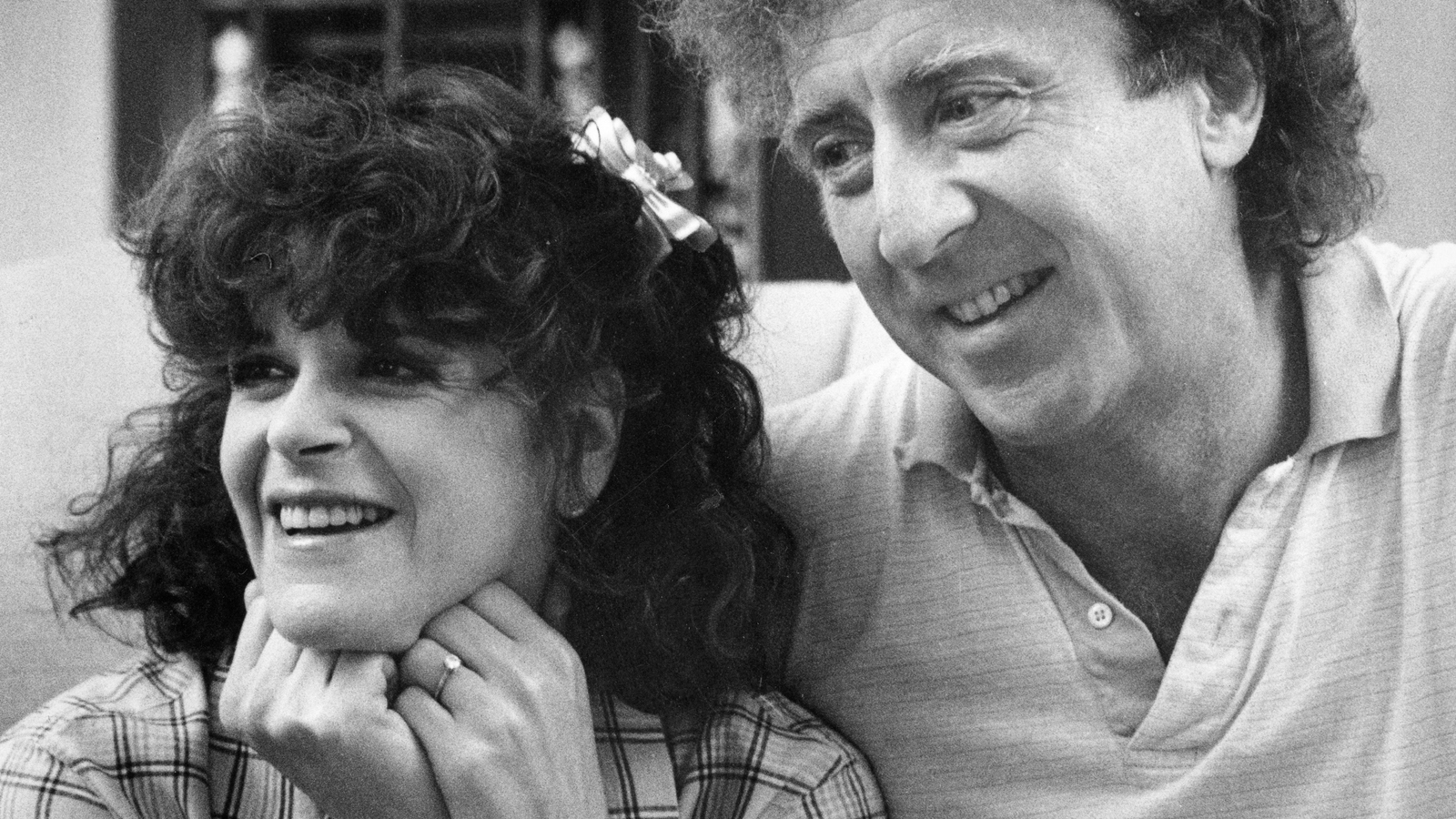
Because Radner found true love the following year on the set of the film “Hanky Panky” with her co-lead Gene Wilder. This was the end of the yearning, to a large extent, her career. Radner and Wilder would make another film together, struggle to conceive a child and get knocked sideways by the ovarian cancer diagnosis. Radner recovered long enough to make a triumphant return to television on an episode of “It’s Garry Shandling’s Show,” written by her pal Zweibel, but the disease clawed its way back and took her from us at the age of 43.
Notwithstanding her autobiography, “It’s Always Something” (published posthumously in 1989), when we celebrate Gilda Radner’s career, we’re really only talking about that six-year span from 1975 to 1980. But even though we obviously, greedily wanted more, what we got was so fully realized and consistently superb, your first thought isn’t to mourn what could’ve been but to marvel at what was.
The real heartbreak is that she never got to bask in the afterglow of her goofball glory, to watch her comedy children grow up and invent new, ingeniously silly variations on her groundbreaking characters. But when you watch Poehler, Rudolph, Wiig, McKinnon and McCarthy cut loose, that electricity is still crackling. She's there. Gilda Radner’s alive.
More must-reads:
- 20 hit songs that were not written by the band's main songwriter
- The 25 most influential comedians to come out of 'Saturday Night Live'
- The 20 most difficult Super Nintendo games
Breaking News
Trending in Entertainment
Customize Your Newsletter
 +
+
Get the latest news and rumors, customized to your favorite sports and teams. Emailed daily. Always free!



